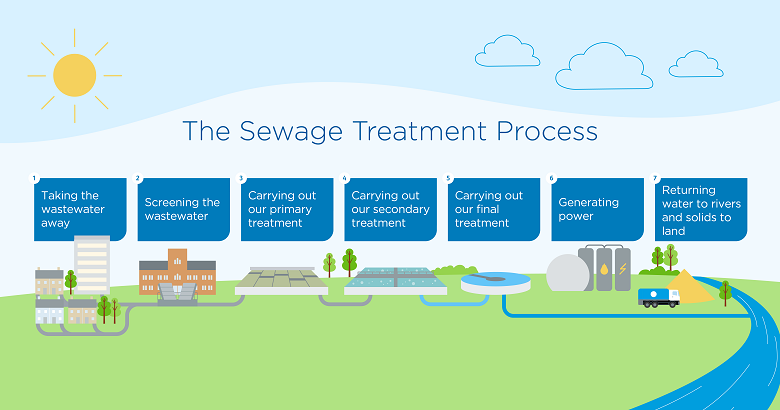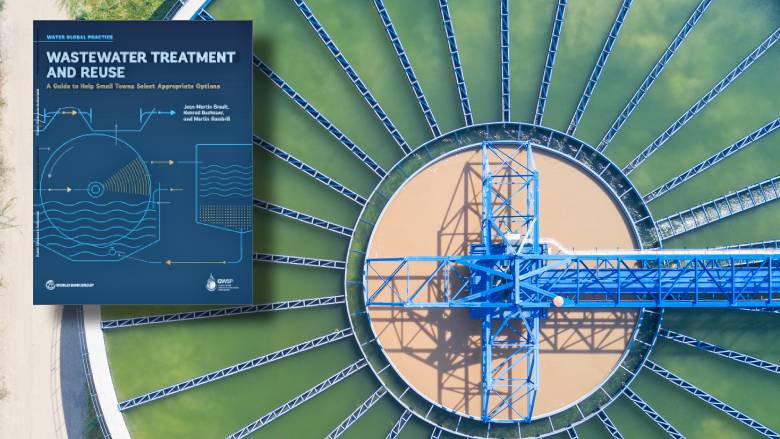Enhanced Waste Water Treatment Solutions for Lasting Water Administration
Wiki Article
Strategic Approaches to Improve Drainage Treatment Effectiveness and Decrease Environmental Influence
In the realm of waste water treatment, the mission for improved efficiency and minimized ecological effect is a continuous obstacle that demands calculated services. As culture faces the necessary to manage water resources sustainably, a nuanced method ends up being crucial. The assimilation of innovative therapy technologies, energy-efficient procedures, resource healing approaches, enhanced nutrient removal methods, and smart monitoring and control systems stands for a diverse framework for resolving these pushing concerns. Nevertheless, what exists at the core of this facility internet of methods is the prospective to reinvent the method we approach drainage treatment, not equally as a procedure of disposal, but as a beneficial chance for advancement and environmental stewardship.Advanced Treatment Technologies
Cutting-edge membrane layer purification systems have actually reinvented sophisticated wastewater treatment procedures, substantially enhancing the removal of contaminants. These innovative systems function forcibly water via a semi-permeable membrane layer, effectively separating contaminations from the water stream. The membrane layer's tiny pores trap contaminants such as germs, infections, and suspended solids, allowing just purified water to go through. This technology has actually confirmed to be very efficient in removing a large range of pollutants, consisting of drugs, hefty metals, and organic compounds, which are often challenging to eliminate via typical therapy methods.Additionally, membrane layer purification systems offer numerous advantages over standard treatment approaches. In addition, these systems are very versatile and can be easily incorporated into existing therapy plants or utilized as standalone systems for decentralized applications.
Energy-Efficient Processes
The assimilation of energy-efficient procedures in wastewater treatment systems is vital for optimizing resource utilization and reducing functional costs. One vital method to improving power efficiency in wastewater therapy is the application of sophisticated oygenation systems, such as great bubble diffusers or surface aerators, which can improve oxygen transfer efficiency and reduce power intake.Moreover, maximizing process control and automation with using sophisticated sensing units and keeping an eye on systems can improve total energy performance by readjusting operations in real-time based on actual need and conditions. Executing energy audits and frequently checking power efficiency signs are necessary practices to recognize areas for improvement and track energy-saving campaigns successfully. In general, the adoption of energy-efficient processes in wastewater therapy not just benefits the atmosphere yet additionally adds to long-term expense savings and functional sustainability.
Resource Healing Techniques
With a concentrate on enhancing source use and sustainability in wastewater treatment systems, the implementation of resource recovery approaches becomes a pivotal facet in enhancing operational performance. Resource recovery approaches in wastewater therapy entail the identification and removal of useful sources from the waste stream, therefore turning what was as soon as thought about waste right into a useful asset. By executing source healing methods such as nutrient elimination and healing, power generation from raw material, and the manufacturing of reusable water, wastewater treatment plants can reduce ecological impact while making best use of performance.
Boosted Nutrient Removal Methods
Carrying out innovative nutrient elimination methods is crucial for optimizing the effectiveness of wastewater therapy systems. Improved nutrient elimination plays an essential role in reducing the environmental influence of cured effluent released right into water bodies. Among the key methods utilized for improved nutrient elimination is the procedure of biological nutrient removal (BNR), which involves the elimination of nitrogen and phosphorus through biological procedures. This can be achieved with the use of specialized bacteria that can transform nitrogen substances right into more tips here inert nitrogen gas via denitrification, and build up phosphorus within their cells via a procedure called enhanced organic look at here phosphorus elimination (EBPR)
In enhancement to BNR, progressed treatment approaches such as membrane layer bioreactors (MBRs) and constructed marshes can likewise be employed to enhance nutrient elimination efficiency. By including these sophisticated nutrient removal methods into wastewater treatment municipalities, systems and industries can effectively lower nutrient air pollution and shield the atmosphere.
Smart Tracking and Control Solution
Using advanced innovation, the integration of clever tracking and control systems changes the functional performance of wastewater treatment facilities. These systems integrate advanced sensing units and data analytics to continuously monitor vital specifications such as pH levels, turbidity, liquified oxygen, and flow rates in real-time. By collecting and assessing this data, drivers can get valuable understandings into the efficiency of the treatment procedures, allowing aggressive adjustments to maximize treatment effectiveness.Smart monitoring and control systems additionally support remote monitoring capabilities, permitting operators to access real-time data and control features from off-site places. This remote ease of access boosts operational versatility and responsiveness, enabling quick interventions in instance of system malfunctions or changes in influent top quality. Moreover, the anticipating upkeep abilities of these systems aid avoid devices failings and reduce downtime, eventually improving the general dependability of wastewater therapy operations (Waste Water Treatment).
Final Thought
Finally, tactical methods such as innovative therapy technologies, energy-efficient processes, source healing approaches, boosted nutrient removal techniques, and smart monitoring and control systems play an essential function in improving wastewater treatment effectiveness and lessening environmental impact. By executing these methods, wastewater treatment plants can improve their overall performance, decrease energy consumption, official source recover useful resources, and guarantee compliance with environmental policies. These methods are necessary for effective and lasting wastewater administration methods.
In conclusion, tactical strategies such as sophisticated treatment innovations, energy-efficient processes, resource healing approaches, improved nutrient elimination techniques, and wise surveillance and control systems play an essential function in boosting wastewater treatment effectiveness and minimizing environmental effect.
Report this wiki page